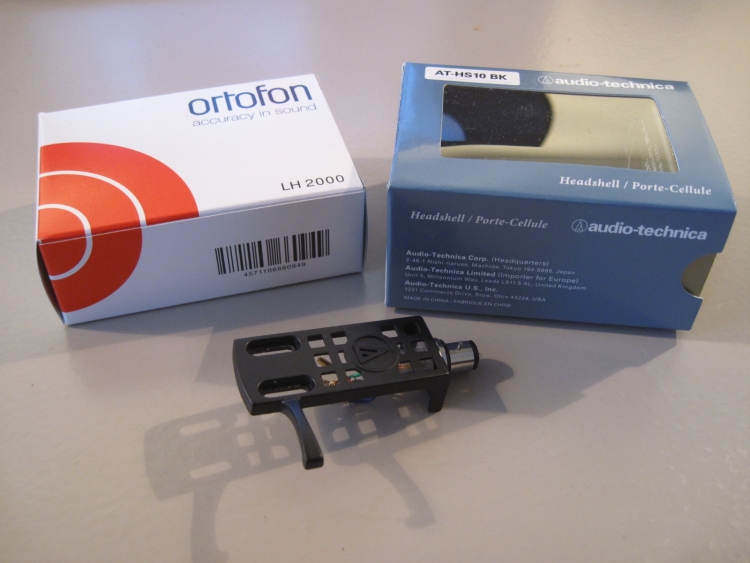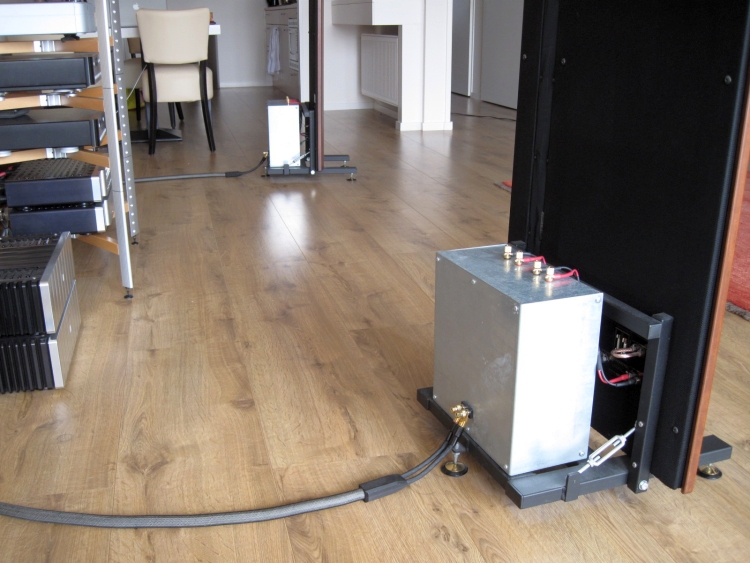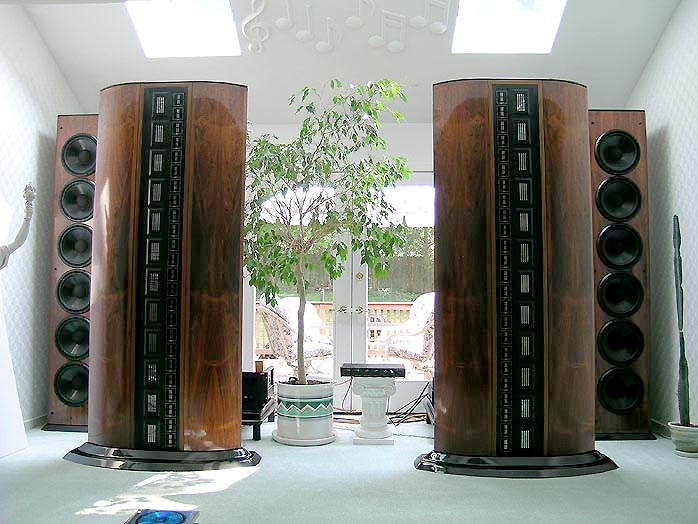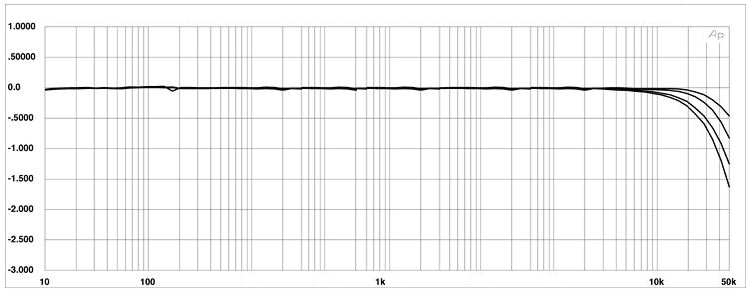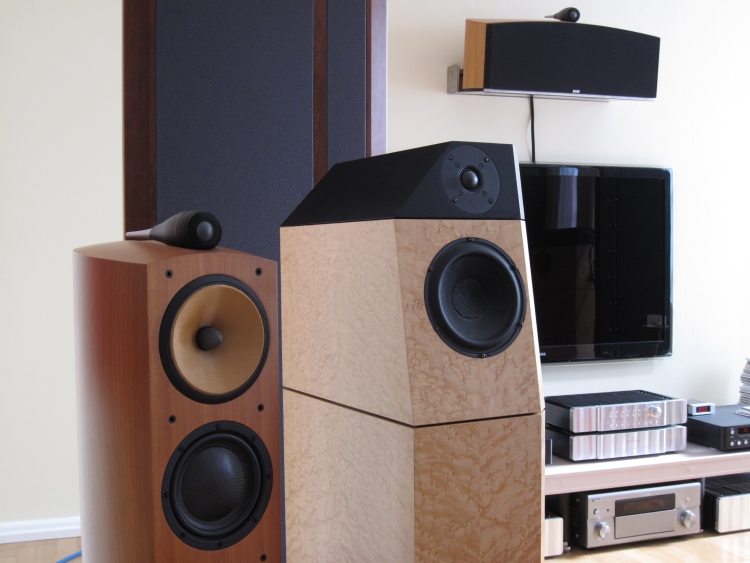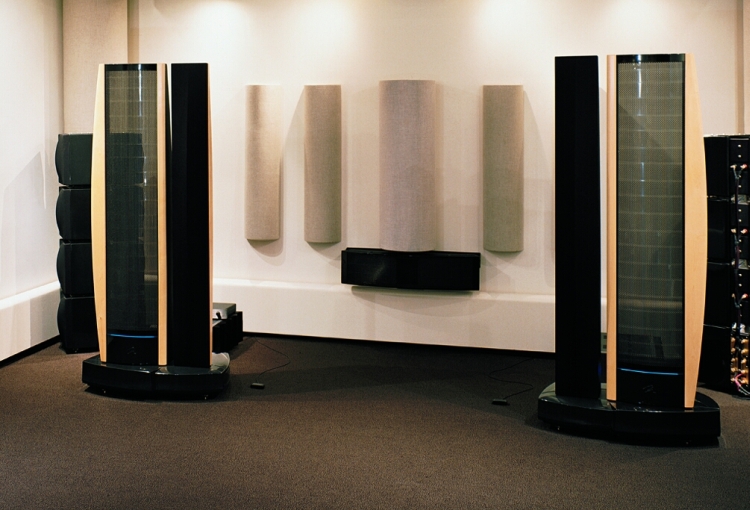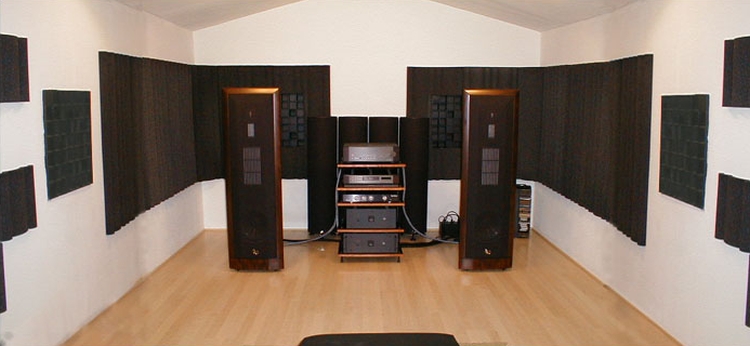
It’s no coincidence that it took so long for me to publish an article about room acoustics
Despite all I’ve learned about audio, I haven’t yet been able to fully tackle this last barrier. In this article I’d like to share what I have learned so far.
Room acoustics is a difficult topic to get a good grip on. Even for experienced audiophiles, it is often still a mystery why one room sounds great while the other room sounds awful. Sadly I have to admit that I am also still somewhat in the dark about it. I know something about room modes, resonances, standing waves, flutter echo, first reflections, absorption, diffusion, lively room/dead room, bass reinforcement/bass canceling, aligning speakers both vertically as well as horizontally and equidistant from the rear- and side-walls, etc, etc. But for few of these properties, I can say that I have fully mastered everything there is to know. When you live in one room for an extended period, have found the sweet spot for the speakers and you don’t change the speakers during that time, you may start to feel that you know your speakers very well and that you know exactly how they sound. You may even feel that you now know how your room works and that setting up a speaker isn’t all that difficult. Until you change to a different set of speakers, or move house. Say for instance that you change your closed cabinet speakers to bass-reflex ported ones. All of a sudden the speakers can sound bass-heavy, boomy and colored. But it can also be that you finally get full, deep bass whereas before it was tight but perhaps lacking body. Or if you move from a small to a large room and keep the same speakers, all of a sudden the sound can literally drown in the room, making for thin, sloppy, unclear bass, phasey mids and confused highs. Alternatively, it can be that you finally get clean bass without that annoying boomy emphasis at certain frequencies. Adversely, when moving from a big to a small room, it suddenly may seem like you have a monster subwoofer in the system because the bass is now finally fully extended whereas before it was merely thin and correct. Changing from a big room to a small room can also lead to significant loss of precision and articulation in the bass whilst the mids may become very forward and even harsh. At this stage, I can continue making examples but that’s just boring and I suppose you got the picture two examples ago. Suffice to say that I have learned that results can often go both ways. Rooms just aren’t that predictable at all. Or am I just ignorant?
Of course, I’m not entirely ignorant in this matter. I do know a thing or two about this matter and I hope to give you, dear reader, some insights into why room acoustics are such a delicate matter.
I’ve learned the hard way how to position my speakers best: by painstakingly moving them around the room, inch by inch, centimeter by centimeter – eventually with millimeter precision. At some point, I learned how to position the toe in just so that the sound stage was nice and large but still focused. Likewise, I figured out how to optimize bass performance to have good depth whilst maintaining articulation. The thing is: every listening room I tried needed a different placement from the rear wall and from each other. There were even differences from room to room, so large in fact that they validated choosing an entirely different amplifier in order to maintain the sound balance the way I like it. This is another reason why I haven’t written about this before: no matter what the experts say, there seem to be no simple universal rules that guarantee good sound.
Cardas Golden Ratio
But there are other ways to decide on speaker placement: the mathematical ways. Regular readers know that I am not all that much a mathematical guy; I tend to trust my instinct and have a good feel for when speakers are optimally placed; I just cannot explain to anyone how I do this. And this is where maths come in. Even though in the electronic world measurements often don’t tell us much about how any component sounds, in the world of acoustics, it is possible to calculate the optimum place for your speakers. There are various guides for deciding/calculating the optimal place for your speakers. George Cardas for example uses the so-called Golden Ratio for room calculations as well as cable design. The formula, according to Wikipedia, is as follows: “In mathematics and the arts, two quantities are in the golden ratio if the ratio of the sum of the quantities to the larger quantity is equal to the ratio of the larger quantity to the smaller one. The golden ratio is an irrational mathematical constant, approximately 1.6180339887.” While the formula itself is beyond me, I understand that it is all about having dimensions not being dividable by each other in an effort to cancel out resonance, as opposed to amplifying it.
Wilson’s method
There’s also an interesting guide from David Wilson, which is really very simple and all you need is your own voice. I simplified the method here as it is just for illustration purposes, not a proper guide. First determine the zone relative to the back wall, so start speaking at the back wall, in front of the listening position, walking toward the listening position whilst speaking. As you approach the listening position, the voice will appear to ‘free up’ as it is relieved of the low-frequency energy imparted by the closeness to the rear wall. In other words, you are listening for the point in the room where the rear wall stops to reinforce bass. When this point is reached, mark the floor with a piece of tape. Using the same procedures, but starting speaking at the side-walls and walking across the room in front of the listening position, you can now determine the left and right boundaries of the Zone. Again, as the person speaking walks away from the side-walls, you should hear the voice freed of the bass reinforcement provided by the side-walls, eventually reaching a point where the opposite wall begins to interact with the voice. Repeat this for the left and right side-walls, again marking the borders with tape. This marks the rear border Zone of neutrality. Continue to walk towards the listening position whilst talking at the same level; listen for the next change in the voice’s tonal quality. This will be the first interaction of the opposite wall and should sound like a loss of focus that seems to resonate because of the side and rear wall reflections. Again, tape-mark the position on the floor when this phenomenon first appears. You now have the front and back borders of the Zone of Neutrality. You may find that the borders are marked fairly incoherently towards the various walls. Simply using these borders would result in an asymmetrical arrangement of the speakers. So take some measurements and average all the different borders you came up with. Then re-arrange the tape to reflect the symmetrical average of your various positions. After performing these procedures you will have two zones, in which your speakers should sound the least colored. Coloration may be a personal preference, though. Perhaps a very wide sound stage or a liquid presentation is more important to you; perhaps you even want some coloration or bass reinforcement. It is entirely up to you! There are many variables to take into account. But if you like to dive into this subject, there are plenty more methods and guides to explore, as evidenced by a Google search.
There are also various computer programs that can do some calculations for you. All you have to do is to put in the room dimensions and some other parameters and it will come up with what is expected to be a good place for your speakers. I have no doubt that calculations like these can yield good results but they are necessarily very coarse and can really only be used as a starting point after which you will have to do the fine-tuning by ear.
The bass problem
Ever since I moved house, I wish that I knew a little more about the principles at work here. Because once more I am at loss to explain why my Magnepan MG3.6R’s sound marvelous in my large new listening room while the B&W N804’s sound awful there. No matter where I place them, they sound colored, boomy, lack bass and basically just don’t sound anything like Nautili. I guess it must have something to do with standing waves, room modes and nulling. The thing is that my room isn’t square. It is very wide where the speakers are (2 meters to the left speaker and 6 meters to the right speaker), and narrower at the listening position (5 meters). The large space at the right speaker is where the kitchen is. But where such a gap can normally result in phasey bass, in my case the bass is very precise and articulate and absolutely not phasey… with the Magnepans playing, that is. When I use regular box speakers (N804’s and Synthese Floating 2 (respectively ported/transmission line products)), it becomes almost impossible to get satisfactory results. The best sound I achieved yet was with the speakers almost in the middle of the room. And still they never sound like they did before in other rooms. What is always easily achieved by means of carefully positioning the speakers and adding some damping materials at key places is smooth treble, good focus and a good sound stage, and I have no problems there. Early reflections and too much liveliness can be easily dealt with. It is the bass however that is always causing me problems. It’s not difficult to find the best spot simply by moving the speakers around the room until you like what you hear. But it takes an incredible amount of time and perseverance. I can really be doing this for hours and hours on end, traveling from sofa to the speakers, do some set-ups by moving the speakers and inch to or fro and travel back to the sofa, only to disapprove what I hear and repeat the cycle dozens of times until I find a good working point, go to bed happily, and to have to repeat the same process the next day because it turns out that I was focusing too much on one aspect of the sound. This continues until I like what I hear and eventually I always find the right spot. But it is a tedious process. And all muscles in my legs always hurt afterward 🙂
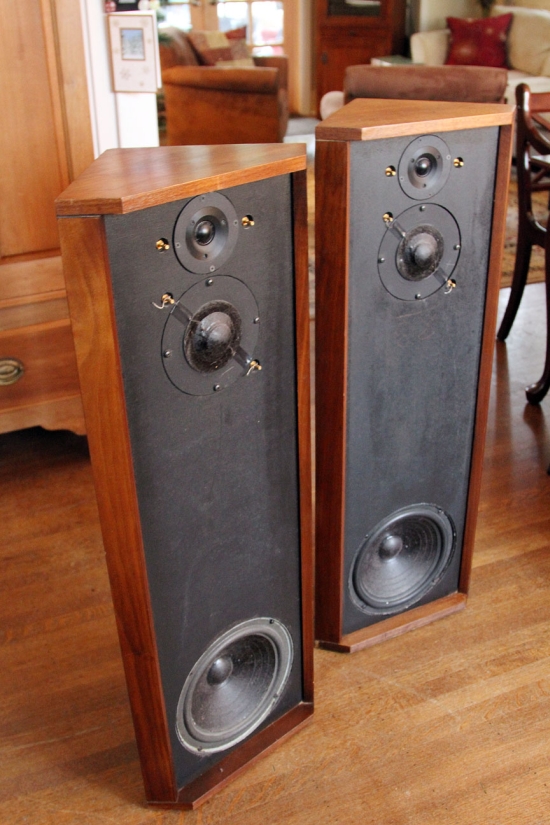
Allison Loudspeakers and the problem of bass cancellation/amplification
I’ll just take a short detour and tell you a bit about a particular brand of speakers: Allison. They are special in that they are specifically designed to tackle the very problem that I always have with my room, which is the bass. But before I tell you about Allison I need to explain a little about bass cancellation. A room can be pretty effectively treated for mid and high frequencies because their shorter wavelengths rarely cause unsolvable phase problems but the really big problems are below 500Hz where the bass is. Bass is omnidirectional; it travels in all directions. Not only towards the listener, but also towards rear and side-walls. When this bass bounces off the walls and is reflected back towards the listener, it has traveled a longer distance than the directly radiated bass. In the best case (when the speaker is so close to the wall that the reflected wave is still more or less in step with the original sound) this muffles the sound, destroys timing, makes bass pitch less clear or makes the bass overall just a bit woolly. More often (when the distance to the walls is great enough to delay the reflected sound so much that it is effectively arriving half a wavelength later) it causes cancellation at certain frequencies, which more often than not results in large dips in the mid bass. You can probably imagine what happens if this problem is doubled if both rear and side-walls cause the same problem. At the same time there is the real possibility that one wall causes canceling while the other wall does the opposite, which is to amplify the bass at certain other frequencies. The end result is a long shot from the wishful thinking that is the flat frequency curve. The theoretically best place for a bass speaker is smack in the corner. This way, all bass, both direct and reflected, is traveling the same distance and is always in phase. This is why we place subwoofers in corners. The bass is amplified acoustically and couples best with the room. Of course you can’t just shove any speaker in the corners of your room because the acoustical amplification will not only keep the bass in phase; it will also hugely color the sound higher up the frequency spectrum. It works with subwoofers because they are filtered to cut off all frequencies above, say, 100Hz. This is so low that it is mostly below the room resonance and the result will be powerful full bass. Normal speakers also have to portray the midrange and high frequencies. These two are hugely compromised when a speaker is placed near a wall. In come the Allison speakers. They have been designed from the get-go to be placed in corners. Their frequency curve has been tailored just so that they sound neutral when they are placed in the corners of a room. This is not an entirely new idea but these days, in the current loudspeaker assortment, it is unique. Have you ever noticed that the amount of bass differs enormously depending on where you stand in the room? The cool thing about the Allison speakers is that the bass sounds perfect just about anywhere in the room. The only downside is that the sound staging is somewhat unusual and pinpointing isn’t their best feature. But otherwise, it is a clever solution to a problem that almost all rooms have. This effect is called “the Allison effect”. Now you know why.
The easiest way around the Allison effect is to use headphones. But that’s no real solution of course. The other easy solution is to use “studio” near field monitor speakers. These speakers are designed to be extremely neutral on a narrow band, at close range. They require you to sit extremely close to them, say within a meter at most. This is how many audio engineers make their audio mixes, especially in the TV world. Near field monitors needn’t be expensive but can be highly neutral in the near field. But they quickly start to color as you move further away. So unless you like sitting at a desk all day, this isn’t the best solution either.
Short of buying Allison speakers or monitor speakers, there is a lot you can do to optimize the bass in your room. I always do it by moving the speakers around the room until I am satisfied. The most important thing to do is to avoid having the same distances to the side and back of the speakers. Lots of space is always good too, but there is a fine line between clean bass and thin bass. You’ll find that most likely you’ll want a certain amount of room-contributed bass amplification. Just because you like it better that way. But there are more clever ways to do this, like using formulas or computer programs. I’ll write more about this further down this article.
So, good bass is achievable. It’s just that I want really, really good bass. And I want it at the other side of the room. And some speakers allow me to achieve this much easier than others. Why? I do not know. I do know that the room is perhaps the most deciding factor for your overall sound.
Computer programs for measurements
There are also computer programs that do measurements by means of a microphone and test tones like the freely available ‘Carma’ (made by German high-end manufacturer Audionet) and ‘RoomEQ Wizard’. These two programs are available free of charge and measure some aspects of the sound and project the results in graphs. You can then decide to move speakers one way or another, add absorbers or diffusers or even use an equalizer to compensate.
While these programs certainly provide useful information, I feel that, for me at least, they are somewhat superfluous since my experience allows me to already hear what’s wrong with the sound, isolate problem areas and virtually “see” the frequency curve in my head. What I need is a program to tell me precisely where to put the speakers. But even if such a program could be found (and I’m sure it exists) I’m still not fully convinced that the end result, while technically correct, will also sound pleasing. I fear that they focus on aspects that are important to the sound quality and forget about some other aspects that are important to the way we perceive sound. I would expect them to focus on a flat frequency curve and while that is certainly something desirable (think headphones sound) it is however not the most important factor, especially if the flat curve is achieved by diminishing other qualities of the sound as is inevitably the case in almost any room. For example, the measured frequency response is always a mixture of direct and indirect sound. For the microphone, they are the same but real ears can differentiate between these two sources and for us it may not be a problem. What’s more, if we continue to make the flat frequency curve the Holy Grail, we start to sacrifice other qualities that may be more important to our enjoyment of the sound. For example, if you want to alleviate a thick, boomy bass by stuffing the reflex port, this actually works, as evidenced by a flatter curve on the measurement device. But what’s lost is some dimensionality in the sound stage and what’s added is some dynamic constraint and a feeling that the speakers aren’t free to breathe. This is just one example but there are many more. My point is that this speaker set-up is just too complex a matter to leave up only to mathematics and computer programs.
Then there is the problem of listening position. You can adjust the sound so that it sounds perfect at the listening position. You can set up the speakers just so that they overcome the annoying room modes or alternatively, make use of them to compensate for an otherwise lack-luster bass. You can even use equalisers quite effectively to make up for dips and peaks in the bass. The thing is that while optimizing the sound for the listening position, you make it worse for almost anywhere else in the room. For example, while lifting bass performance at the listening position (to compensate for bass nulling) you lift the bass boom to even higher levels at certain places in the room, making it impossible to enjoy the music anywhere but at the listening seat. I like to move around the house while listening to music. This is why I sold my Martin Logans some time ago: they allowed a one-person only experience. And that person wasn’t allowed to stand up or move left/right for more than 0.5 meters.
I could carry on and on, explaining my personal problems here but I’m sure that this isn’t what you, dear reader, are here for. Let’s move on to solutions mode. Oops, can’t do that. For once, I have no real workable solutions at hand. This is actually why I haven’t written this article earlier. I like to be able to provide some handles to work with but I’m afraid that the matter of room acoustics is just a bit too complex.
More elaborate computer programs
Then there are more elaborate programs like ‘Room Optimizer’ by RPG, in which you can virtually move your speakers around the virtual room in order to find the best position for the bass. ‘CARA’ (Computer Aided Room Acoustics) is also still around. This program represents one of the first efforts to combat room problems with computer power. You can run it on any computer and it allows you to enter a lot of data such as the room dimensions and shape, the presence and material of drapery, details about your furniture and even has a library of many loudspeakers’ measured data that you can load to give an even more accurate description of your personal situation. The program then goes through a range of test tones and then suggests the optimal coordinates for your speakers. Additionally, it comes up with suggestions for you to carry out. For example, it will show in a graphical representation in which direction you should move any particular speaker. The measurements and suggestions continue until you have found the perfect set-up. Both programs aren’t free, but probably well worth the cost if you’re serious about your sound and don’t mind learning a thing or two about frequencies in general and your rooms’ in particular.
Active room equalization
You could also leave the entire procedure up to DSP computer power and not worry about speaker placement at all. Just put the speakers anywhere you like and let some powerful DSP correct for distance, coloration and other problems. By doing so you can still obtain a pretty neutral sound and a surprisingly flat frequency curve even when the speakers are in impossible positions. For example, when I moved my B&W N804’s into my small but dedicated cinema room it suddenly sounded as if the tweeters were behind drapery and I had added two huge subwoofers set to maximum level. Very exciting stuff, but sadly the bass reinforcement was picky about frequency. Some notes were super heavy while others were thin and actually lacking bass. I tried everything with the speaker’s positions but couldn’t obtain a neutral enough balance. Then I remembered that my Yamaha DSP Z7 amp has an automatic room-EQ function. I never much believed in this and because my previous room was much better, I just hadn’t tried it before. I set up the microphone at the listening position and let the amp do its thing. A few minutes later it was done, I saved the setting and started listening. Boy, was I in for a surprise! The mids and highs opened up, focus improved and everything was much more neutral. The best thing of all was in the bass. Now all notes were the same level regardless of frequency! Amazing stuff. But it now was a little bass-light. Now I was in for some more testing. I took out my little REL Quake II subs, added them to the set-up, re-ran the auto EQ set-up and prepared for boom-boom. Now there was a surprise again: the bass was now actually fuller and smoother yet more precise than without the subs! I think that this is because the amp now has the option to cut the low bass for the main speakers, equalize them best for the remaining part of the frequency spectrum, then redirect the bass to the subs, where it can be further equalized. Me being the bass-monster I am, I added a little bass lift again for good measure but the rest of the spectrum needed no alteration. Well done Yamaha. But this is for home cinema use. I have to admit that the amp still sounds more natural when all DSP has been disabled. So I’d say that room-EQ is very useful but should only be used if all else fails. In the case of the latter, the result with DSP is actually much better than without. I never looked back. However, EQ cannot solve all problems. Especially in the case of a worst-case scenario Allison effect, in which the bass, reflected from rear and side-walls, completely cancels out the bass at certain frequencies, you can try to amplify the bass at those frequencies, but the cancellation will also be larger. You will end up with speakers struggling to produce huger and higher bass to compensate for the bigger and bigger troughs in the frequency curve that are caused by acoustic problems that can only really be solved by changing the position of the speakers or installing bass traps, or a combination of both. However, Room EQ can add the final touches and make the curve super-flat, after the room has been treated acoustically.
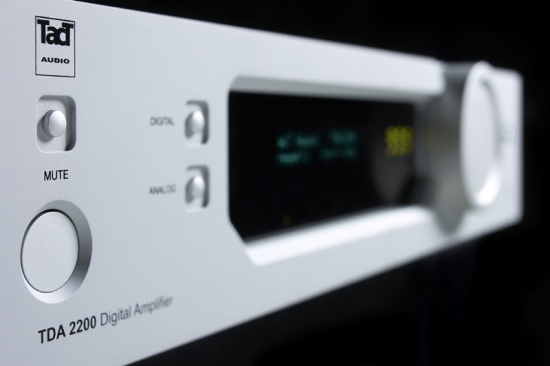
Tact (Now Lyngdorf Audio)
Then there is the high-end version of Yamaha’s room EQ. I have never used the Tact but considering the great results with the Z7, I have no doubt that the Tact could work wonders. Especially since it doesn’t only address the frequency curve but also tackles resonances that exist because of delays. The Tact can split the entire band into tiny segments, applying different amounts of filtering and delay to different frequency ranges. But do note that it will most likely be used with its analog inputs and outputs. This means that the signal will be converted twice. And even when you have a digital set-up and all processing will be in the digital domain, my experience thus far tells me that you will hear some degradation. No matter what they tell you, it will not be 100% transparent. Then again, if you can solve some serious room problems by means of EQ like this, then more likely then not, it will be worth it. I may test the Tact some day for myself. Once I have done that, I will update this article.
In conclusion
The thing is: the theoretically optimal place for your speakers may not take into account your personal taste and may not compensate for brightness/bass-heaviness/coloration/dryness that is present in the sound due to other parts of your system, or even, the room itself. For example, the computer programs may accommodate for the purest bass response but in return make the sound too forward or too lean in balance. Also, a flat curve doesn’t necessarily mean that the result will appear neutral. This is something that I’m rebelling against more often in these pages, which is that theoretical perfection may not “sound” perfect to your ears. In the end, whether you are using a guide or computer program to make calculations, or you are doing the entire process by trial and error, it always comes down to listening carefully to the system as a whole and using your own judgment to achieve the best balance.
But let me quickly step off my soapbox again. Instead, wouldn’t it be nice if I could just provide some handles for achieving good speaker placement? Sadly, if there’s anything I’ve learned about speaker placement and room acoustics, it is that there are no simple rules. Every room is different, every speaker behaves differently and then there’s also your personal taste that counts. All that I can conclude at this stage is that the room actually turns out to influence sound much more than any other parameter, or even a component swap. Yes, I’m willing to argue that a “good” room with affordable equipment (no, not Yoko, but any reasonable mid-class components) will outperform a “bad” room with super high-end equipment. It’s that old thing again that I ramble about so much in my articles; the components themselves are to a large extent less important than the company they’re in. It is mostly about getting the right balance and this is something that everyone has to find for him or herself. The good news? It takes nothing more than patience and an open mind.
